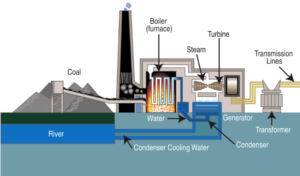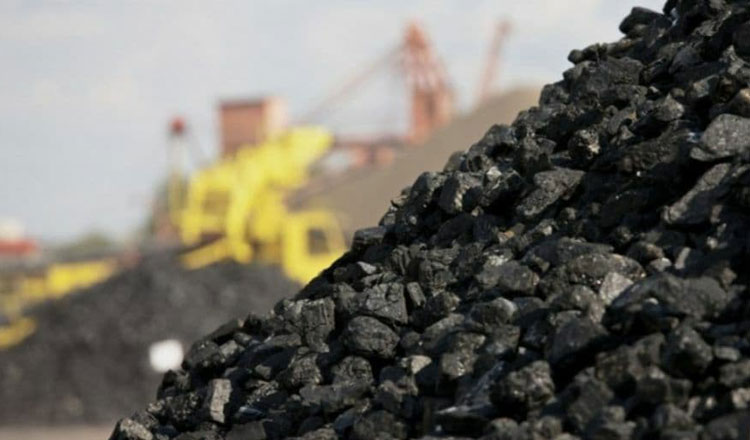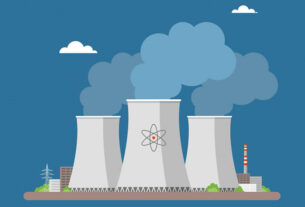
Cambodia announces it does not plan to develop anymore new coal-fired power plants
Suy Sem, Minister of Mines and Energy, has said that Cambodia does not plan to develop anymore new coal-fired power plants in addition to the projects already approved by the Royal Government since 2019 and continue to encourage investment in clean energy to respond to climate change.
The remarks were made by the Minister during a working meeting with British Ambassador to Cambodia Tina Redshaw before the start of the 26th UN Climate Change Summit.
He said Cambodia would switch to low-carbon energy sources such as imported natural gas, LNG or hydrogen instead and continue to encourage investment in the clean energy sector.
He said that according to the study of Cambodia’s new energy development master plan, which is being prepared by the ADB for addressing national environmental goals and the global commitment in the energy sector, the ratio of the power of renewable energy sources will be about 59%.
The intensity of greenhouse gas emissions in the new plan compared to the old scenario that Cambodia developed earlier will be reduced by 34% compared to the traditional development.
The British Ambassador to Cambodia, Ms Redshaw requested that the Ministry review and support British companies’ solar energy investment projects in Cambodia.
As of now, 97% of the villages have electricity supply from the national grid, and more than 84% of the houses have electricity supply from the grid.
Are Southeast Asian nations meeting their climate commitments?
As one of the regions most vulnerable to the effects of climate change, Southeast Asia knows the extent of the risk more than most. But is the region doing enough to take the problem seriously?
Southeast Asians view intense rainstorms and flooding as the most serious impact of global warming, a survey found
Southeast Asia is among the world’s most at-risk regions when it comes to the impact of global warming. The UN Intergovernmental Panel on Climate Change (IPCC) warned in its most recent report that the region is facing rising sea levels, heat waves, droughts and increasingly intense rainstorms.
“Recent studies estimate that up to 96% of the ASEAN region is likely to be affected by drought, and up to 64% affected by extreme drought,” Benjamin P. Horton, director of the Earth Observatory of Singapore at Nanyang Technological University, told DW.
“Future sea-level rise will affect populations, economies and infrastructure of every coastal nation,” he added.
During last year alone, almost 5 million people were affected when Typhoon Vamco battered the Philippines and Vietnam in November 2020while 289 people died in the floods caused by tropical storm Linfa in Cambodia, Laos, Thailand and Vietnam just a month earlier, according to a September report by the International Federation of the Red Cross and Red Crescent Societies and its climate center.
A climate survey by the ISEAS-Yusof Ishak Institute found that Southeast Asians view the increasingly intense rainstorms and flooding as the most serious impact of global warming.
Most countries in the region have pledged to speed up reductions in greenhouse gas emissions as part of the 2015 Paris climate agreement, the main goal of which is to limit warming to under 2 degrees Celsius (3.6 degrees Fahrenheit) relative to pre-industrial levels.
They have also passed laws and policies to address climate change — but more can still be done, according to Melinda Martinus, a lead researcher at the ISEAS-Yusof Ishak Institute.
“I believe there will be many more developments coming from the region as businesses and governments face pressure to take more action to address climate change. Hopefully, those will be much more ambitious,” Martinus told DW.
While climate change has repeatedly been identified at ASEAN summits and meetings as a critical regional challenge, concrete action is still lacking.
“Clearly, these visions need to be articulated into much clearer programs and strategies in the near future,” said Martinus.
Net-zero targets
Indonesia, Southeast Asia’s largest economy and the world’s eighth-biggest greenhouse gas emitter, aims to attain net-zero emissions by 2060.
Though the country — the world’s top exporter of thermal or steam coal, used to generate electricity — has plans to phase out fossil fuel for electricity generation by 2056 and has pledged not to commission any additional coal power plants, it is still 60% powered by coal.
Meanwhile, Thailand pledged in 2015 to reduce its emissions by 20% by 2030 with newly announced proposals to achieve carbon neutrality by 2065 to 2070.
But even if it achieves those targets, the country would still be 15 to 20 years behind the timeline set by the UN, including reaching zero greenhouse gas emissions by 2050, the principal goal of the COP26 climate summit being held next week in Glasgow.
Andrew Beirne, the UK’s economic and prosperity councilor, said last week that Thailand should raise its 2015 target of reducing emissions by 20%, suggesting the country could achieve a 30% reduction, according to local media.
The manufacturing and transport sectors are expected to make severe cuts — nearly 73% of the entire goal — but power production, the biggest contributor to emissions, is only required to reduce them by around 20% to meet the current target, according to Thailand’s road map for nationally determined contributions (NDC), or emissions cut pledges.
Vietnam has not yet set a net-zero target, but it is looking at boosting its sources of renewable energy and increasing legislation restricting use of coal to reduce emissions.
Singapore has also not set a target date for achieving net-zero emissions.
“By 2050, Singapore currently aims to cut emissions by 50% from their peak, with no definite deadline for reaching net-zero emissions. Other nations, however, have been more ambitious in their targets,” said Horton.
A wildfire that burned through at least 7,780 hectares (30 square miles) in about a week and devastated forests in southern Spain was brought under control thanks to steady rains. The downpour helped the firefighters, who were backed by some 50 aircrafts. The blaze was one of the most difficult to combat in recent times in Spain. Some 2,600 people were forced to flee their homes.
Research group Climate Action Tracker has said that while Southeast Asian countries have varying degrees of commitment to tackle global warming, none are sufficiently acting on pledges made under the Paris climate deal.
“The Climate Action Tracker ranked Indonesia’s and Vietnam’s overall NDC update as highly insufficient. Meanwhile, Singapore is critically inadequate,” said Martinus.
“Clearly, those countries should have raised more ambitious targets to help the world limit global heating to well below 2 degrees Celsius,” she added.
Source: https://www.khmertimeskh.com/50962220/cambodia-bans-new-coal-fired-power-plant-development-project/


